|
A Home and a Reminder
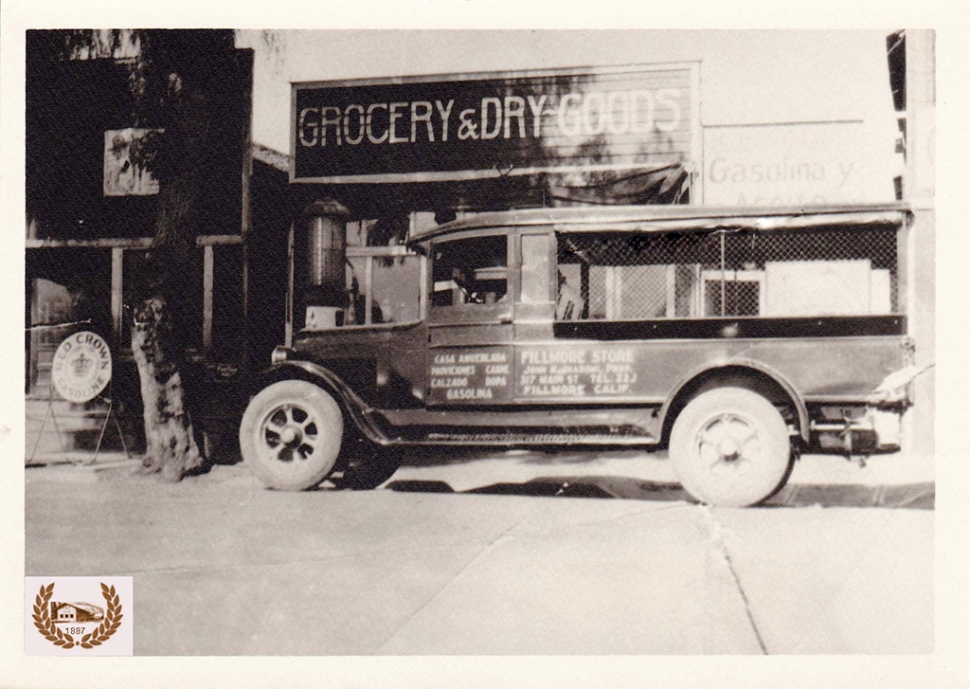 Inadomi Company store opened back in February 1925, pictured above is a Inadomi Delivery truck circa 1925 which was used to deliver groceries to customers. Photos courtesy Fillmore History Museum. By Gazette Staff Writers — Wednesday, October 20th, 2021
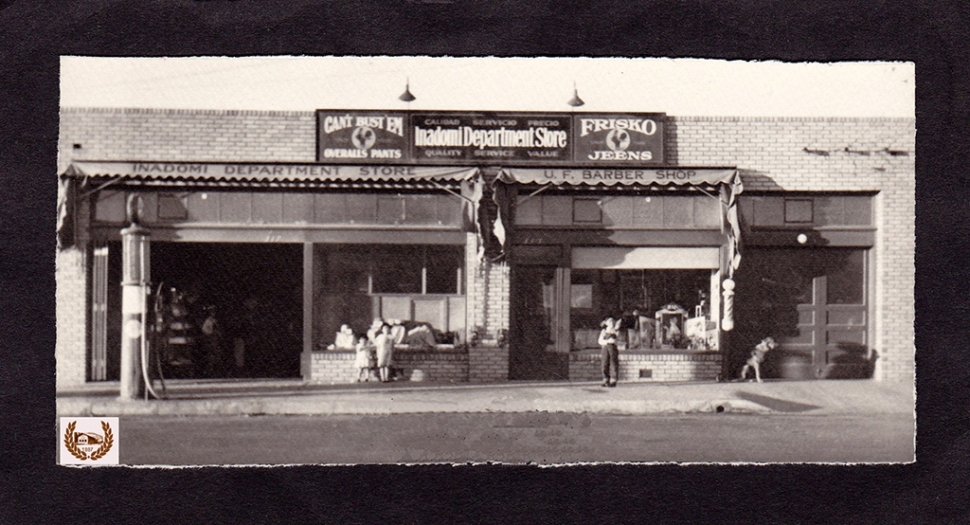 The Inadomi store in 1925, where they sold groceries and other items to the community especially catering to the needs of Spanish speaking customers. 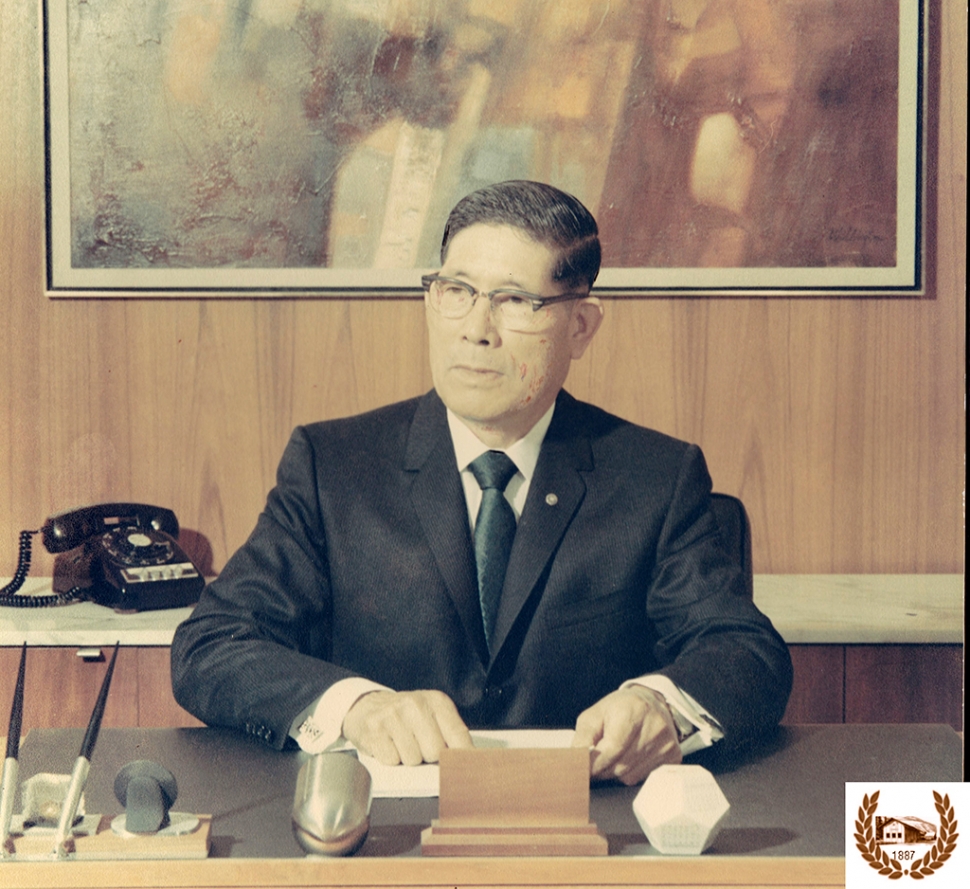 Jon Inadomi 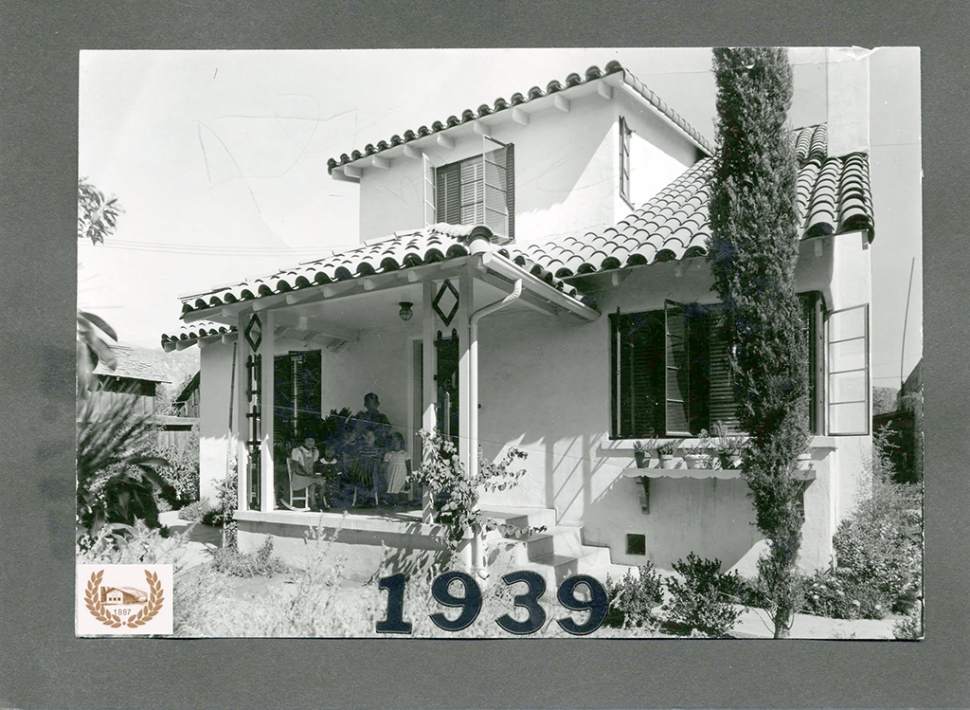 Inadomi home on Main and Clay in 1939. 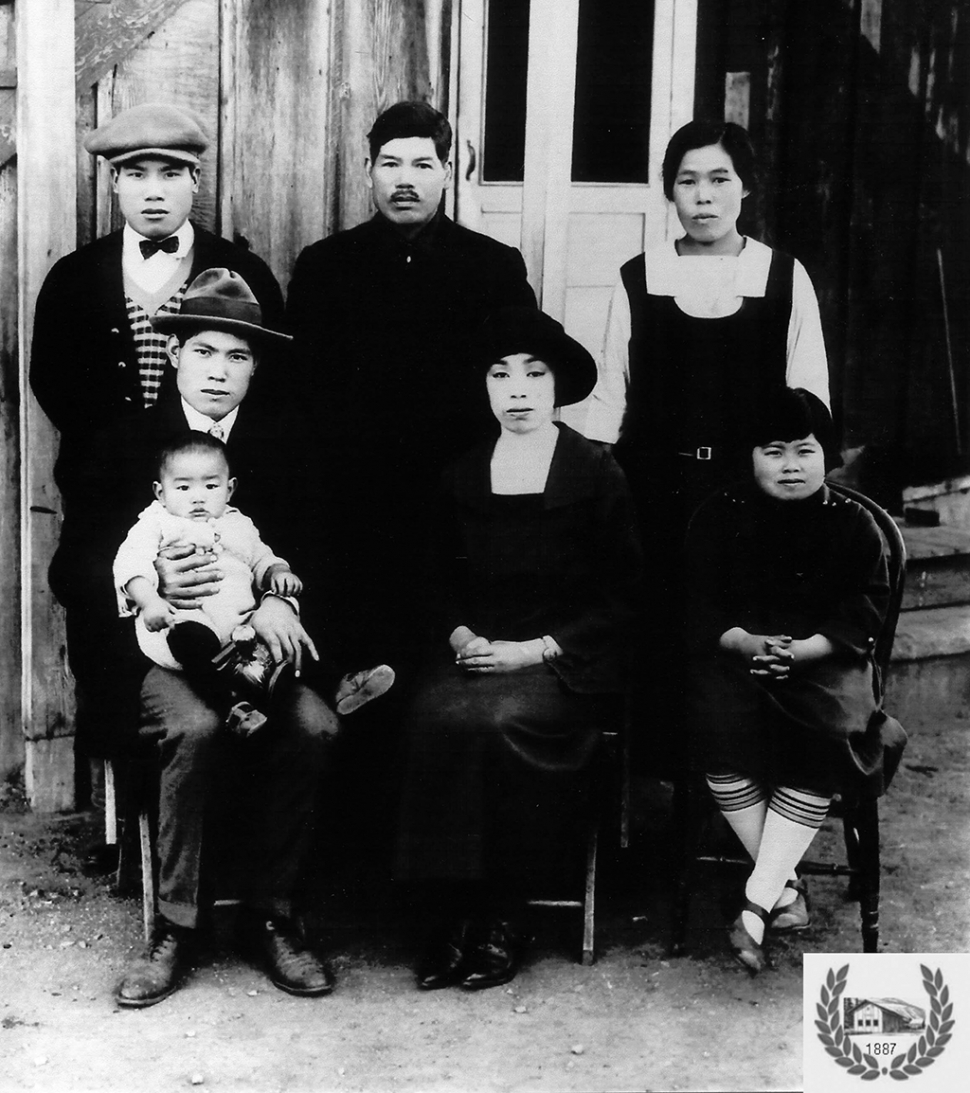 (l-r) (back row) Kumanosuke, Monda, & Wari (front row) Kaichiro with Yosh in his lap, Mitsuyo, & Midori. 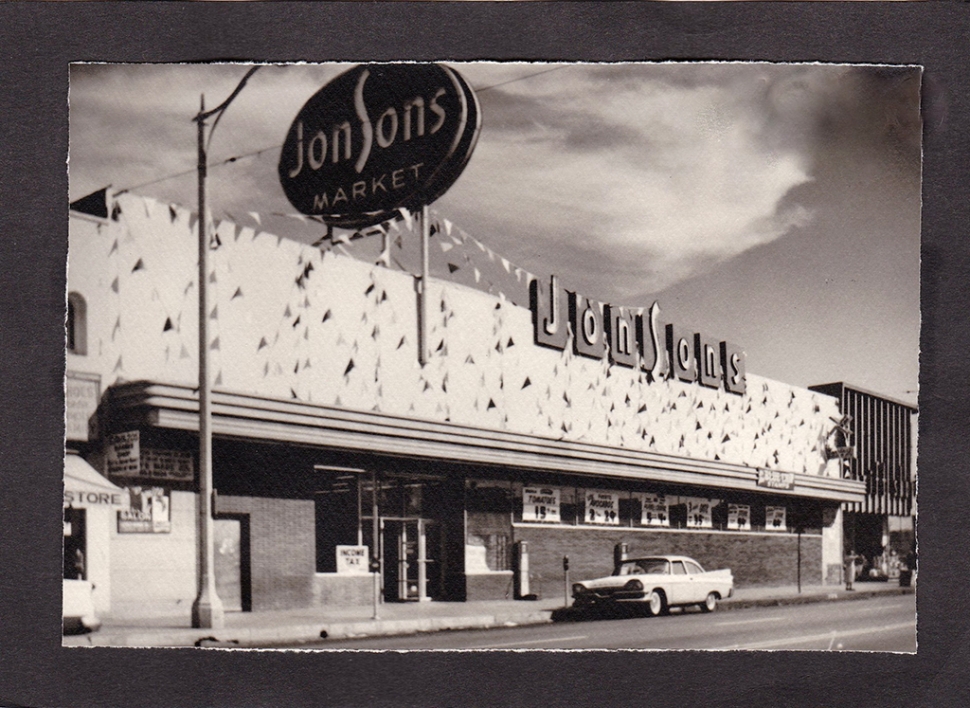 JonSons Grocery Store in 1979. Courtesy Fillmore History Museum A house on Main Street, set back from the corner, represents so much more than the security of home and comfort. A well-known and well-loved local family, the Inadomi’s, built it in 1939 before World War II began. Soon it would bear witness to the tragedy of a dark moment in the history of the United States. Still standing over 80 years later it continues to remind us of this terrible event and gives us hope that it never happens again. Kaichiro Inadomi had emigrated from Japan in 1914 to join his father who was working for the Limoneira Ranch in Santa Paula. In 1922 he returned to Japan to marry Mitsuyu Ogawa. They returned to Ventura County where he continued with his job at Limoneira becoming a foreman at the age twenty two. In 1925, looking to improve the future for himself and his family, he decided to purchase a grocery store on Main St. in Fillmore. Because of the existing alien land laws in the U.S., Kaichiro, not being an American citizen, could not own property in this country. He was able to purchase the store with the help of an attorney, a Mr. Tanigoshi who bought the business in his Caucasian American wife’s name and then resold it to Kaichiro’ s American born children Yoshiharu and Taduko who were both under the age of 3 at the time. The Inadomi Company store opened on February 1, 1925. He sold groceries and other items to the community especially catering to the needs of Spanish speaking customers. Kaichiro soon became known as “John” or “Juan” to his Spanish speaking customers. He was active in the community and was a member of the Rotary Club and the Presbyterian Church. Initially the family lived in a “shack” behind the store but it was soon enlarged to shelter his growing family. In 1929 the store was enlarged and rebuilt of brick and in 1939 Kaichiro built a new house beside the store. Today the store is no longer there but the house still stands on the corner of Main St. and Clay St. Following the bombing of Pearl Harbor by the Japanese in 1941 the entire United States was gripped by fear and hysteria. The United States went to war with Germany, Italy, and Japan. On February, 19, 1942, President Roosevelt enacted Executive Order 9066 which allowed for the exclusion of suspect people from the coastal areas of the country. Families up and down both the east and west coasts of German, Italian, and Japanese descent were given a very short time to pack up and turn themselves in. The Inadomi family was included in this order. It is also to be noted that far fewer German and Italian individuals were interned than Japanese. At the time of the bombing of Pearl Harbor, Kaichiro owned three stores in Ventura County. They were located in Fillmore, Santa Paula, and Oxnard. His brother, Kumanosuke, owned a store in Ventura. The Inadomis were required to report to the authorities and be incarcerated in interment camps for the duration of the war. Many members of the community including: J. L. Strickland, President of Fillmore Rotary, Rev. William S. Orr, Pastor of the Presbyterian Church, and Fergus Fairbanks, Attorney, wrote letters on their behalf hoping to help the family stay in their Fillmore home. In spite of all of these efforts the family was still required to leave. In 1941 Kaichiro/ John wrote a letter to the Fillmore Herald expressing his appreciation for the people of Fillmore to “thank you for those kindnesses, and courtesies and evidences of good will.” When Order 9066 was implemented it gave the Japanese community mere days to deal with their homes, businesses, and possessions. Most sold or gave away everything they owned at a tremendous loss. They then reported to processing centers with the few possessions they could carry where they waited to be sent to interment camps. These camps were hastily built and located away from the coast, mostly in extreme hostile desert areas. At the rapidly built camps families were housed in cramped tarpaper barracks. Entire families lived together in just one or two rooms. There was no privacy and they had few household belongings. At most camps the people were treated like prisoners with guards and barbed wire fences. The Inadomis first reported to the Tulare Assembly Center and were later sent to the Gila River Camp on the Gila River Indian Reservation in Arizona, where John served as a meat buyer. In 1943 the family left for Colorado where they had purchased a farm in Yoshiharu’s name. John’s brother, Kumanosuke, “Manuel”, had already settled there. They remained in Colorado returning to Southern California in 1947 several years after the end of the war. While the family was away, the store was leased. Much of the Inadomi Company Store’s business had been run on a credit basis. When they left Fillmore over $65,000 was owed to them by people in the community. A few people sent their payments to the family in Arizona although there were still great losses. One local man and fellow Rotarian, Milo Cobb, continued to run the store and take care of the family’s possessions during the war. His granddaughter, Mary Gordon, recalls that her grandfather ran the business as if it were his own and returned it and the proceeds to the Inadomis upon the family’s return. The two families, the Cobbs and Inadomis remained close friends until their passing. In 1947, John sold the farm in Colorado. As the Fillmore store was still under lease, the family did not return to Fillmore. Instead they moved to East Los Angeles where they opened a chain of grocery stores because “Los Angeles had a bigger future” and because the rest of the extended family was there. Their “JonSons” chain of stores was very successful and Kaichiro once again became a valued member of the local community. He was president of the Southern California Grocers’ Association, a director of the Pan American Bank, president of the Japanese-American Community Service of Southern California, and president of the Belvedere Rotary Club with 27 years of perfect attendance. The laws regarding citizenship changed and Mr. and Mrs. Inadomi became US citizens on June 25, 1954. Their granddaughter, Patricia Inadomi, wrote “Great Expectations” about her grandparents’ life and experiences based on interviews with family members. Patricia says that her grandparents were not bitter over their losses. They loved the United States, their adopted home, because, “He felt it would provide a better life for his family.” In spite of the many losses due the war he was able to assure a better life and future for his children and future generations. With thanks to the following for their information. |
